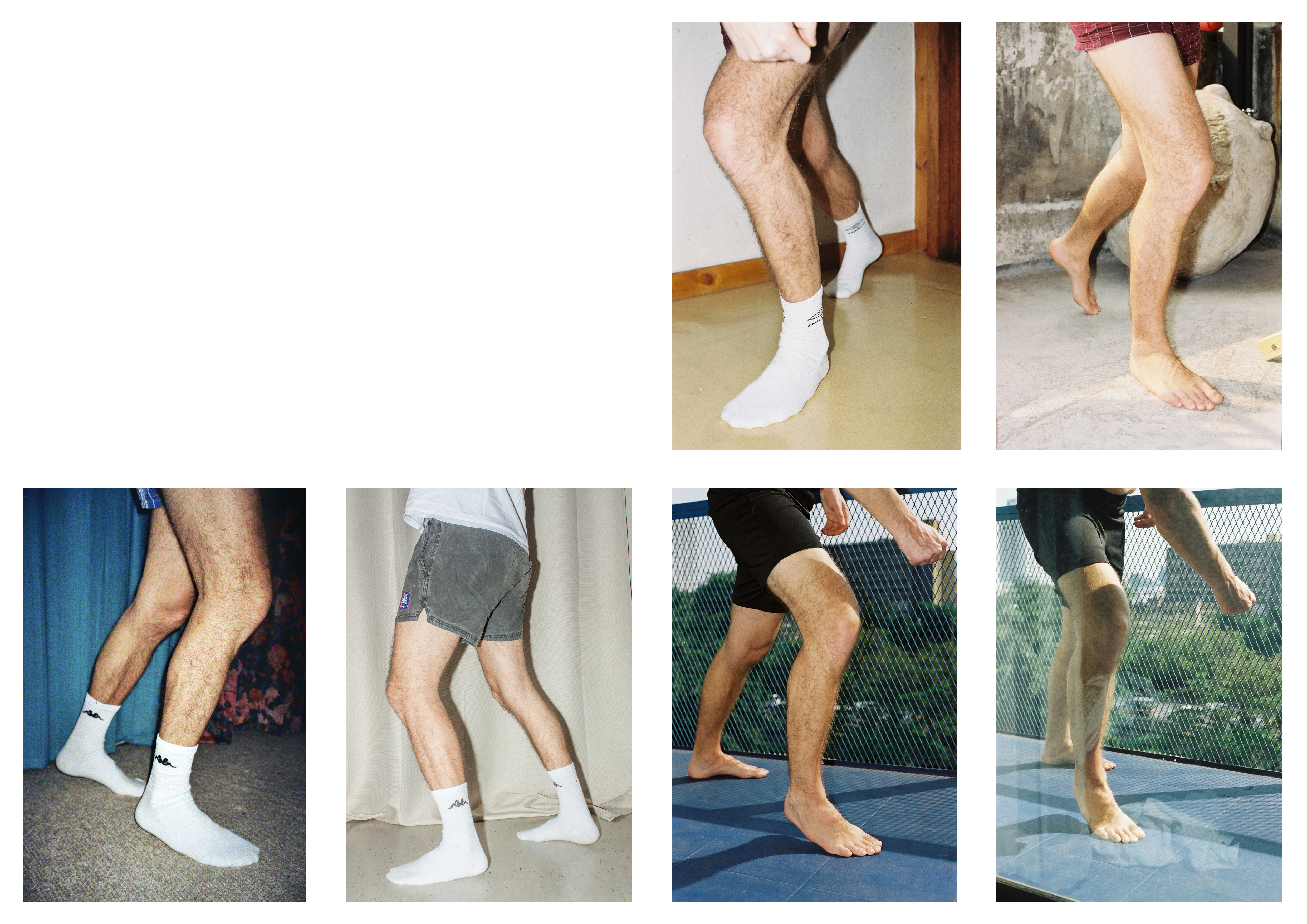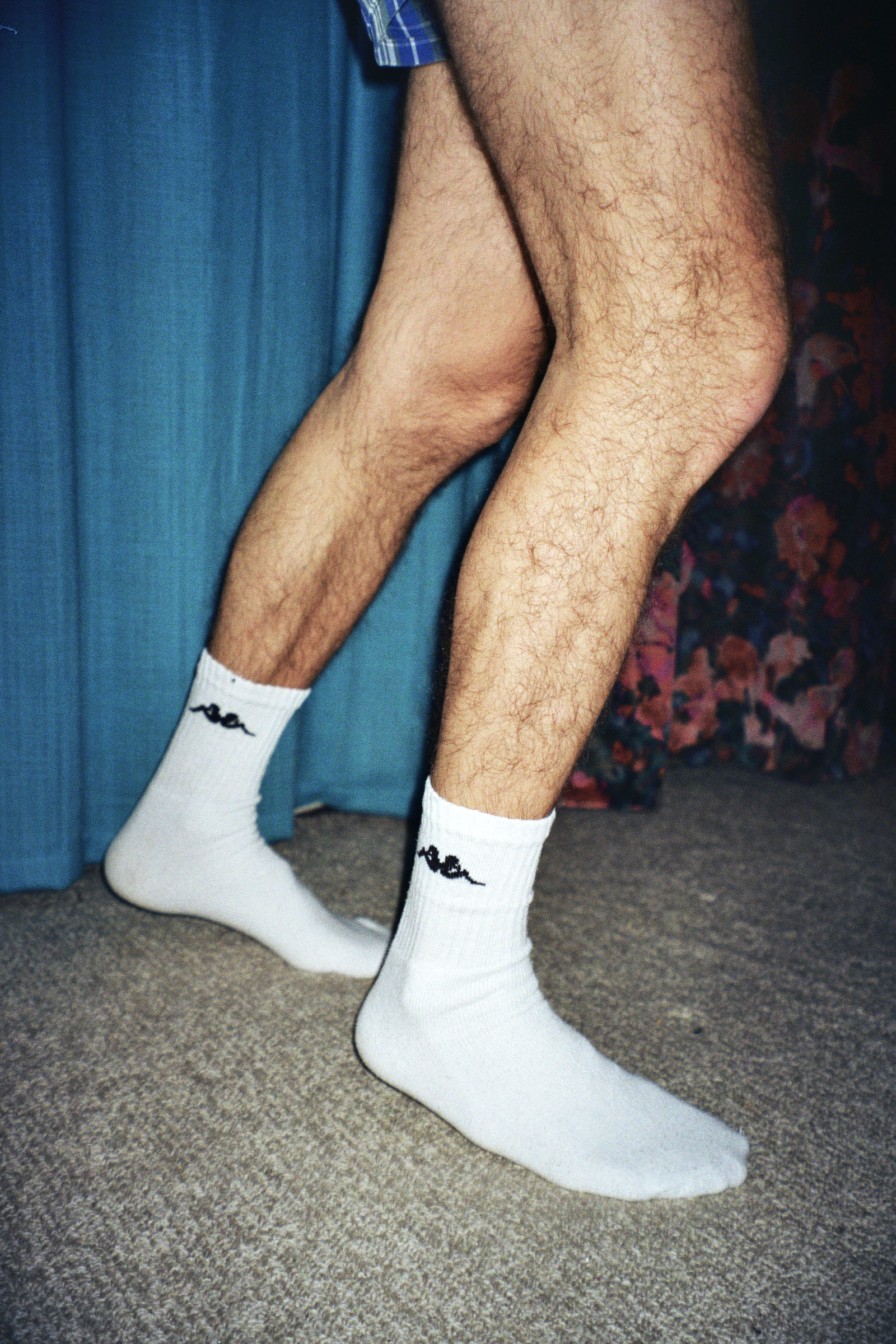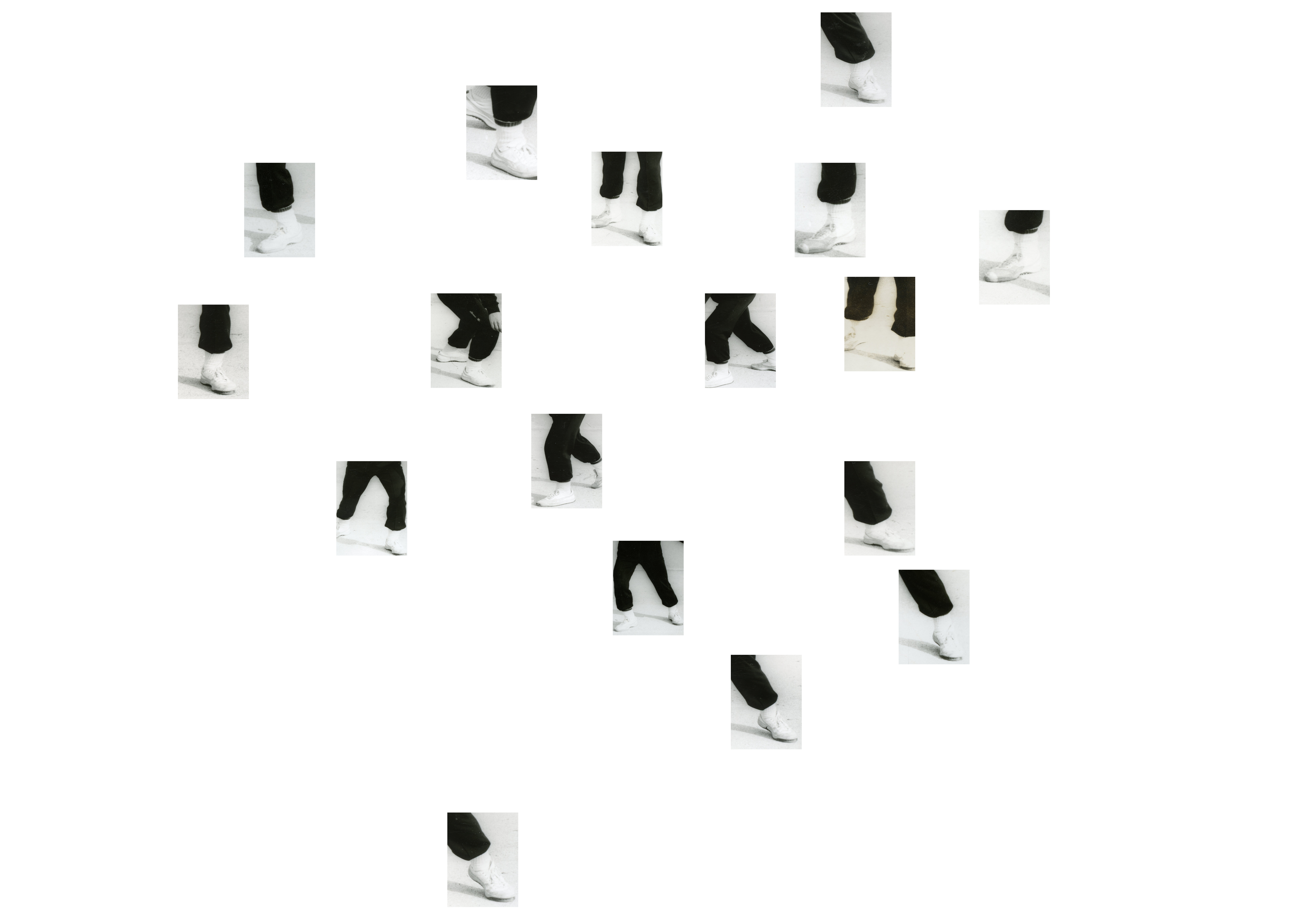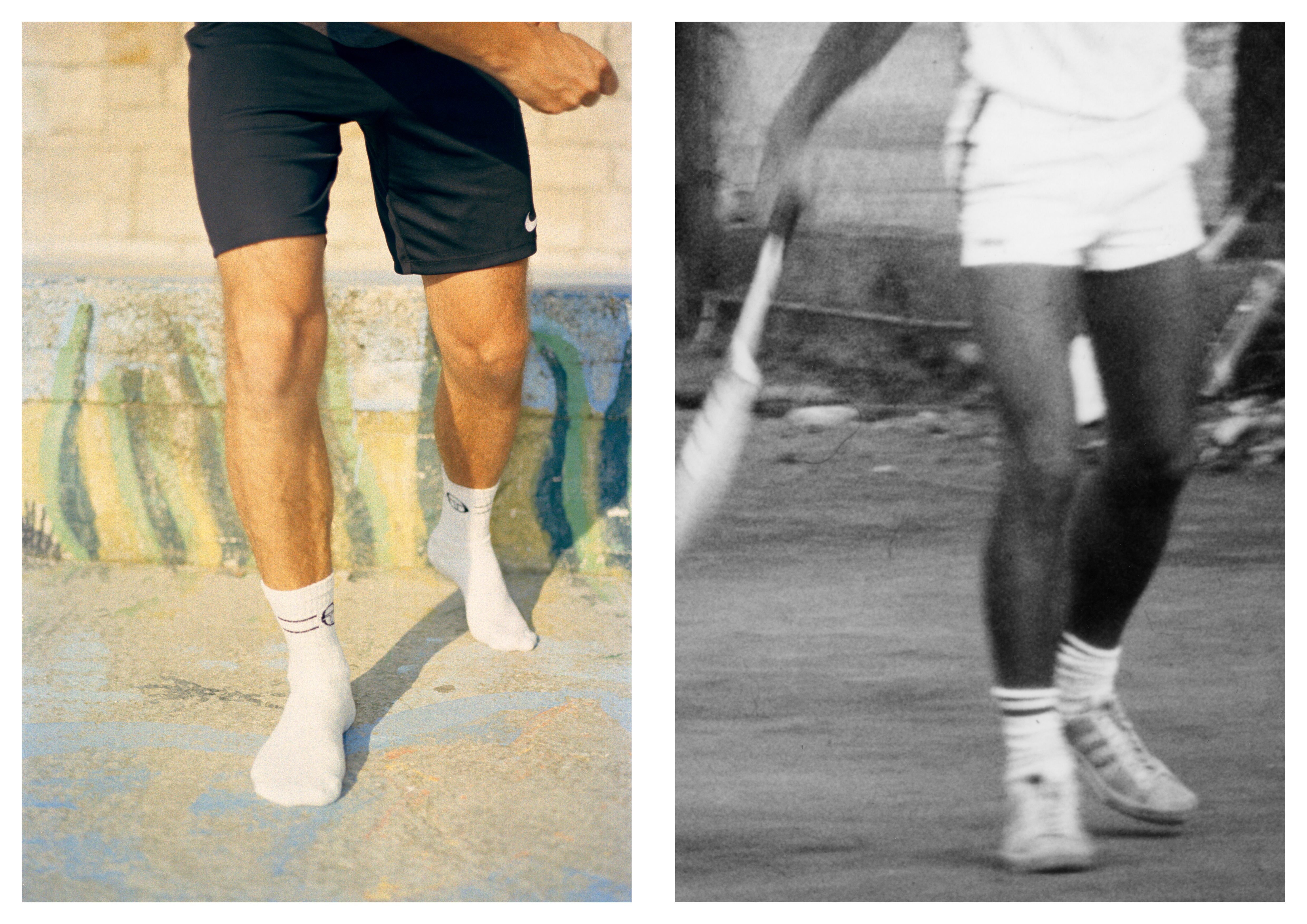2. My Father’s Legs









019
Everything has started with my mother telling me that she fell in love with my father because of his beautiful legs. His obsession with tennis became mine. I’m photographing obsessively my partner’s legs in different tennis positions in our daily life mixed between concept art and art-as-therapy.
_____
The works gathered at the Sara Perović’s solo exhibition My Father’s Legs are two interconnected groups of photographs evolving as series depicting details of male legs or entire bodies in different tennis playing poses. In the photographic representation we identify older, found family archive photos and original new contemporary photos, portraying interrelations between time, motif and context. Evolving around the found family photos of artist Sara Perović’s father playing tennis, the new photos repeat, i.e. in a directorial setting of sorts, re-enact and reproduce the leg position of the older photographic model, creating visual correlations between the past and the present. In a clash between the old and the new, between archive image, memory and a recent scene, photography frames the central male legs motif as a scene repeating in a series of repetitions and variations and, aside from photography, it manifests itself in different media, such as an artist’s book browsed as a flip-book or a video of the piece in which animation and editing particularly highlight motion and repetition.
Since the 70s, the feminist theory and practice, before all focused on film theory, started to deconstruct the viewing strategies. The viewing positions questioned the voyeurist and fetishist views which separated the subject and the object. The breakup of traditional binary oppositions between male and female, active and passive, brought changes in the traditional positions of power that used to be on the observer’s side, defined as male, while the observed object was defined female. Feminist discourses tried to point out that the body, perceived as an image and represented statically (photograph) and in moving pictures (film and video), was an iconic field subject to a male gaze.
Sara Perović’s photographic exploration creates visual parallels in which the artist juxtaposes her father’s found photos and contemporary artistic photos of her partner she made herself, overturning thus the dominant convention of the subject-object relationship, the observer vs. the observed, the watching regime convention in which the gaze is traditionally perceived as the male subject and the female body is considered the object. In the photographs this norm is destabilised and Sara’s play with codes and conventions of representation, humour and casualness point to the objectification of the male body before the female gaze. What our gaze additionally discloses in the background, juxtaposing the archival and the contemporary photo, is atmosphere and genre, strictness of professional athletic photography from a tennis textbook against the abstract white background, juxtaposed with the daily life of the home scene of a man in sports socks mainly indoors, a scene we recognise as the intimate atmosphere of home.
Sara Perović’s photographic project My Father’s Legs can be seen from several points of view, from the autobiographical, personal angle of an artist focusing on memory inscribed in a private photo album, as a feminist deconstruction of the dominant gaze, and as genius loci, observing the context of a broader social image interwoven with the tennis playing thread in Pula in the eighties. Tennis playing from the Perović family biography is part of the city’s social history and the memory of many citizens of Pula.
(Except from the text by Branka Benčić about the exhibition in Apoteka - Space for Contemporary Art, Vodnjan,August 2020)
More on
VOGUE.IT
DER GREIF
PH MUSEUM